Identifying antique cast iron Dutch ovens requires understanding their historical significance, craftsmanship, and distinctive markings. This guide explores key factors to help enthusiasts authenticate and value these treasured cookware pieces.
Understanding the Basics of Dutch Oven Identification
Identifying antique cast iron Dutch ovens begins with evaluating their condition, maker’s marks, and historical context. Key factors include patina, seasoning, and signs of wear. Maker’s marks, such as logos or foundry stamps, provide clues about the manufacturer and era. Historical context, like design evolution, helps date the piece. Understanding these basics ensures accurate identification and valuation, distinguishing genuine antiques from reproductions. This foundational knowledge is essential for collectors and enthusiasts to appreciate the craftsmanship and heritage behind these timeless cookware pieces.
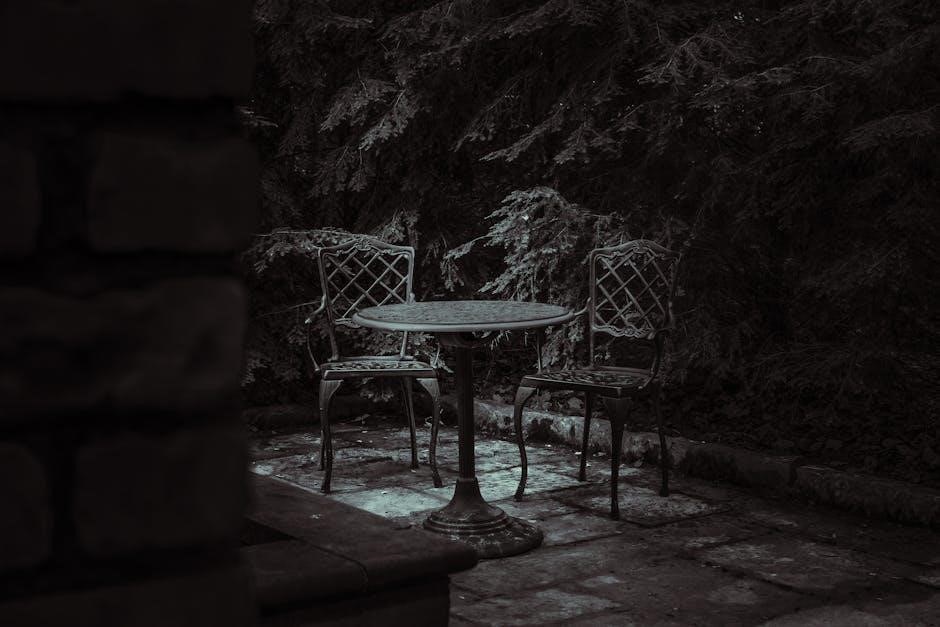
Physical Characteristics of Antique Cast Iron Dutch Ovens
Antique cast iron Dutch ovens are known for their sturdy construction, thick walls, and heavy weight; They often feature flat lids, bail handles, and varying sizes.
Size and Shape Variations in Antique Dutch Ovens
Antique Dutch ovens vary significantly in size and shape, reflecting their historical use and craftsmanship. Smaller ovens, typically 6-8 quarts, were ideal for family meals, while larger ones, up to 20 quarts, served communal gatherings. Shapes range from deep, heavy pots with flat lids to more rounded or oval designs. Some feature legless bottoms for hearth use, while others have legs for campfire cooking. These variations help enthusiasts date and authenticate pieces, as specific styles were popular during different eras. Size and shape are key identifiers in determining the origin and purpose of each Dutch oven.
Handle Designs and Lid Types in Vintage Cast Iron Dutch Ovens
Handle designs and lid types on vintage cast iron Dutch ovens offer valuable clues for identification. Early models often feature simple, looped handles, while later pieces may have more ergonomic designs. Lid styles vary from flat to domed, with some including condensation rims to improve cooking efficiency; The handle’s attachment method—whether riveted or cast as part of the pot—can indicate the manufacturer and era. Additionally, lids sometimes have distinctive markings or handles of their own, aiding in dating and authenticating the piece. These details are essential for distinguishing between different makers and periods, making them a focal point in the identification process.
Thickness and Weight of Antique Cast Iron Dutch Ovens
Antique cast iron Dutch ovens are known for their substantial thickness and weight, which contribute to their durability and heat retention. The thickness of the iron typically ranges from 1/4 inch to 1/2 inch, with earlier models often being heavier. The weight can vary significantly, depending on size and construction, sometimes exceeding 20 pounds for larger pieces. These physical characteristics are crucial for identifying authentic antique Dutch ovens, as modern reproductions tend to be lighter and less robust. The thickness and weight not only indicate the oven’s age but also reflect the craftsmanship of the era, making them essential factors in assessment and valuation.
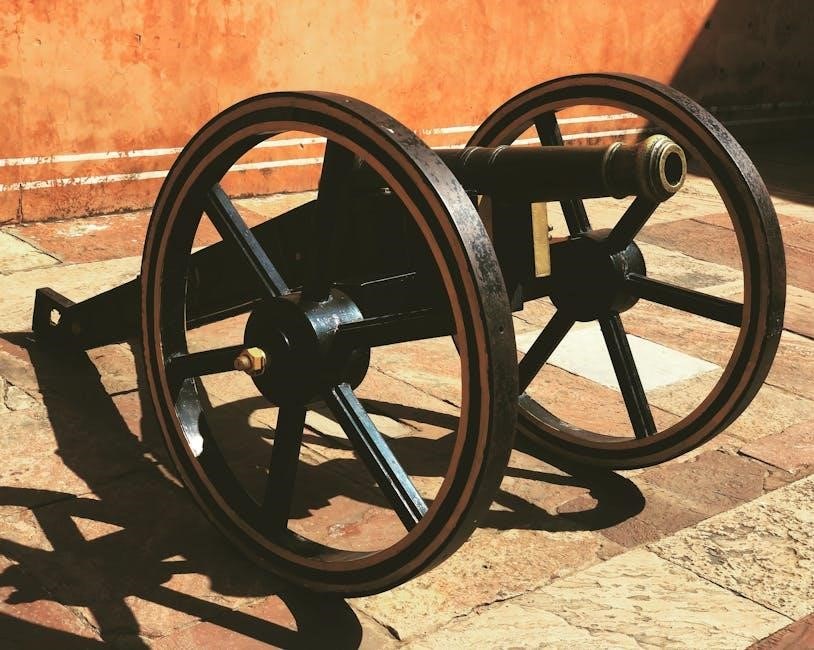
Identifying Marks and Signatures on Antique Dutch Ovens
Antique Dutch ovens often feature logos, maker’s marks, or foundry stamps that help trace their origins and age. These markings are crucial for authenticating and dating the pieces.
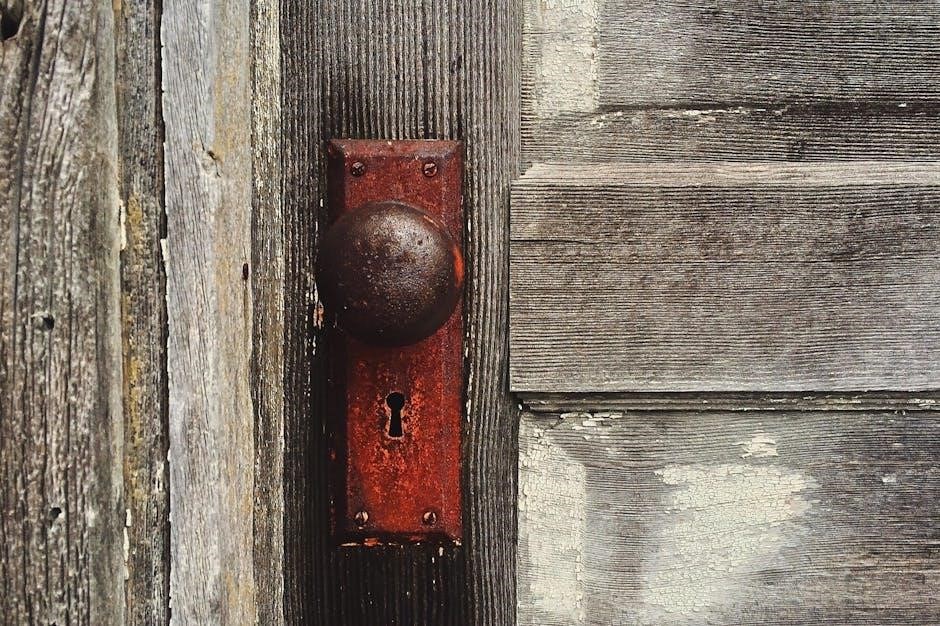
Logos and Maker’s Marks on Vintage Cast Iron Cookware
Logos and maker’s marks on vintage cast iron cookware are essential for identification. They often include the manufacturer’s name, initials, or symbols, such as Griswold’s iconic cross or Lodge’s “L” mark. These marks can be found on the base, handle, or lid and vary in design over time. For example, Griswold pieces from the early 20th century may feature a slanted font, while later models use a straight font. Wagner Ware items often display their name in a circular pattern. These markings not only indicate the maker but also help date the piece, as companies updated their logos periodically; Collectors and enthusiasts rely on these details to authenticate and value their finds, making them a crucial part of the identification process.
Foundry Marks and Stampings on Antique Dutch Ovens
Foundry marks and stampings on antique Dutch ovens provide critical clues for identification. These marks, often located on the base or handle, include pattern numbers, mold identifiers, and sometimes dates. Early pieces may feature foundry codes or symbols that evolved over time. For example, Griswold and Wagner often used unique numerical or alphabetical systems to denote specific models or production periods. These marks can help determine the oven’s age and origin, as different foundries had distinct stamping practices. However, wear and tear or restoration efforts can obscure these details, making them challenging to decipher. Collectors and historians rely on these markings to trace the history and authenticity of antique cast iron cookware.
Dating Your Dutch Oven Through Historical Markings
Dating antique Dutch ovens relies heavily on analyzing historical markings and production patterns. Early 19th-century pieces often lack specific dates but may feature foundry logos or pattern numbers that correspond to known manufacturing periods. Mid-19th-century ovens sometimes include patent dates or design changes that indicate their era. By the early 20th century, manufacturers like Griswold and Wagner began using more detailed stamps, including model numbers and catalog references, which can be cross-referenced with historical records. Collectors study these marks to pinpoint production timelines, as subtle changes in logos or stamping styles often signal specific decades. These historical markings serve as a timeline, helping enthusiasts authenticate and date their antique cast iron cookware accurately.
Evaluating the Condition of Antique Cast Iron Dutch Ovens
Evaluating condition involves assessing patina, seasoning, rust, and damage. A well-maintained patina and intact seasoning indicate good care, while rust or cracks suggest neglect or wear.
Assessing Patina and Seasoning on Vintage Dutch Ovens
Patina, the surface texture and color, reveals a Dutch oven’s age and usage history. A smooth, even patina often signifies careful maintenance, while a rough or uneven one may indicate neglect. Seasoning, the baked-on oil layer, protects the iron and enhances cooking performance. A well-seasoned Dutch oven will have a dark, glossy finish that is non-stick. Chips, cracks, or rust spots in the seasoning can compromise its functionality and value. Inspecting these elements helps determine the overall condition and authenticity of the piece, guiding collectors in preservation and restoration efforts.
Identifying Rust and Damage on Antique Cast Iron Cookware
Inspecting for rust and damage is crucial when evaluating antique cast iron Dutch ovens. Rust spots, often found in areas where seasoning has worn off, can indicate poor maintenance or exposure to moisture. Minor surface rust can be cleaned and re-seasoned, but deep or widespread rust may weaken the metal. Check for cracks, dents, or heat damage, which can affect structural integrity. Chips in the seasoning or pitting from rust can harbor bacteria and require restoration. The presence and extent of damage significantly impact the piece’s functionality and value, making it essential to assess these factors during identification and appraisal.
Restoration and Maintenance Tips for Antique Dutch Ovens
Restoring and maintaining antique Dutch ovens involves gentle cleaning and re-seasoning to preserve their functionality and historical charm. Start by scrubbing off rust and grime with steel wool and mild soap, then rinse thoroughly. Avoid harsh chemicals, as they can strip away seasoning. Apply a thin layer of food-safe oil, like flaxseed or vegetable oil, and bake in the oven at 350°F for an hour to re-season. Regular maintenance includes handwashing, drying immediately, and applying a light oil coating. Proper care extends the life of these heirloom pieces, ensuring they remain usable and valuable for future generations.

Historical Context and Evolution of Cast Iron Dutch Ovens
Cast iron Dutch ovens originated in the 18th century, serving as essential slow-cooking vessels. Their design evolved over time, featuring thick walls and tight-fitting lids. They became integral to various regional cuisines, reflecting historical culinary practices and cultural exchanges.
19th-Century Cast Iron Dutch Oven Designs and Features
Nineteenth-century cast iron Dutch ovens were renowned for their durability and versatility. They typically featured thick, heat-retentive walls and tightly fitting lids, allowing for even cooking over open fires. Many models incorporated handles on both the pot and lid for easier handling, while some had legs to elevate the oven above hot coals. Makers like Griswold and Wagner began introducing distinctive logos and markings during this period, which now aid collectors in identifying these pieces. The ovens were often seasoned to create a non-stick surface, enhancing their performance. These designs became indispensable in both home kitchens and outdoor settings, reflecting the era’s culinary needs and craftsmanship.
Early 20th-Century Innovations in Dutch Oven Manufacturing
The early 20th century brought significant advancements in Dutch oven production, with manufacturers like Lodge and Wagner adopting more streamlined casting techniques. This era saw the introduction of machined finishes, creating smoother surfaces for easier cooking and cleaning. Seasoning processes became more standardized, enhancing durability and non-stick properties. Innovations in handle designs improved usability, while the addition of pour spouts simplified serving. Companies also began experimenting with sizes and shapes to cater to diverse cooking needs. These improvements made cast iron Dutch ovens more accessible and user-friendly, solidifying their place in both professional and home kitchens during this period.
Regional Variations in Antique Dutch Oven Production
Antique Dutch ovens exhibit distinct regional variations, reflecting local manufacturing techniques and preferences. Southern foundries often produced heavier, thicker-walled ovens for rugged outdoor use, while Midwestern manufacturers favored slightly thinner castings for versatility. New England companies incorporated intricate handle designs, influenced by maritime hardware. Western foundries, catering to pioneers, made compact, portable designs. These regional differences in weight, handle styles, and sizing provide valuable clues for identification and add to the historical charm of each piece. Collectors prize these variations for their unique stories and craftsmanship, making regional origins a key factor in assessing rarity and cultural significance.
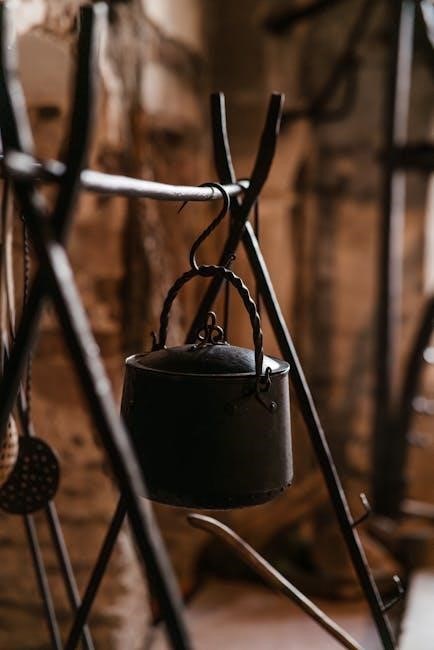
Common Manufacturers of Antique Cast Iron Dutch Ovens
Prominent manufacturers like Griswold, Lodge, and Wagner produced iconic cast iron Dutch ovens, known for their exceptional craftsmanship and historical significance in American culinary traditions.
Griswold Cast Iron Dutch Oven Identification Guide
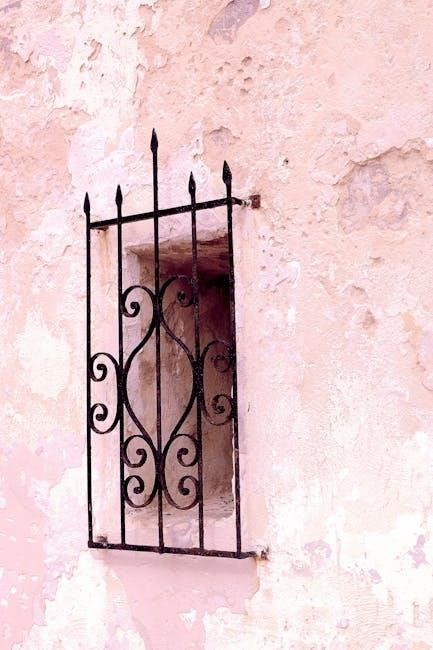
Griswold cast iron Dutch ovens are highly sought after by collectors due to their exceptional quality and craftsmanship. Produced from the late 19th to the mid-20th century, Griswold pieces often feature distinctive logos, such as the “Erie” or “Griswold” stamp, which help in authentication. The size number on the handle and the presence of heat rings are key identifying features. Unmarked pans may still be Griswold if they exhibit characteristic design elements. Collectors should look for a smooth, even patina and seasoning, as these indicate age and proper care. Griswold Dutch ovens are prized for their durability and historical significance, making them valuable additions to any cast iron collection.
Lodge Cast Iron Dutch Oven History and Features
Lodge Cast Iron Dutch ovens have been a cornerstone of American cookware since the late 19th century, renowned for their durability and exceptional heat retention. Known for their iconic design, Lodge Dutch ovens often feature a distinctive handle and size number stamped on the lid or handle. The smooth, even finish and absence of elaborate markings set them apart from other brands. Collectors prize Lodge Dutch ovens for their historical significance and versatility in both cooking and camping. Their timeless design and robust construction make them a favorite among chefs and enthusiasts alike, ensuring their enduring popularity in the culinary world.
Wagner Cast Iron Dutch Oven Models and Markings
Wagner Dutch ovens are celebrated for their high-quality craftsmanship and distinctive markings. Common models include the Wagner Ware Magnalite and the earlier Wagner Sidney series. These ovens often feature a heat ring on the lid and a smooth, polished finish. The Wagner logo, typically embossed on the lid handle, is a key identifier. Collectors look for specific marks like “Wagner Ware” or “Magnalite” to authenticate pieces. Variations in handle designs and lid shapes also help date these ovens. The presence of a patent number can further assist in determining the production era, making Wagner Dutch ovens highly sought after by enthusiasts of vintage cast iron cookware.
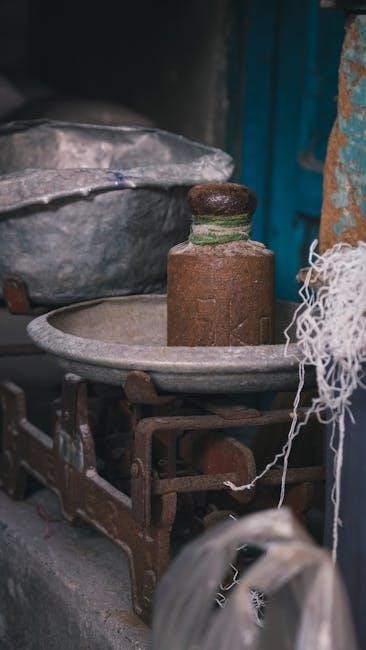
Collectibility and Value of Antique Dutch Ovens
Antique Dutch ovens are highly collectible, with value influenced by rarity, condition, and historical provenance. Well-preserved pieces with clear maker’s marks command premium prices among enthusiasts and collectors.
Factors Affecting the Rarity of Antique Dutch Ovens
The rarity of antique Dutch ovens is influenced by factors such as production quantity, historical significance, and condition. Limited production runs, unique designs, and historical ties to specific foundries or regions can significantly impact value. Additionally, the presence of intact maker’s marks, logos, or patents enhances rarity. Ovens from renowned manufacturers like Griswold or Wagner are particularly sought after. The condition of the piece, including patina and seasoning, also plays a role, as well-preserved ovens are rarer than those showing extensive wear or damage. Rarity is further determined by the demand among collectors, which can fluctuate based on market trends and enthusiast preferences.
Determining the Market Value of Vintage Cast Iron Cookware
Determining the market value of vintage cast iron cookware involves assessing rarity, condition, and demand. Pieces with unique designs, historical significance, or provenance from notable manufacturers like Griswold or Wagner often command higher prices. Condition plays a crucial role, with intact seasoning, minimal rust, and preserved patina increasing value. Demand among collectors also influences pricing, as specific models or eras may be highly sought after. Researching sold items, consulting appraisal services, and leveraging expert opinions can provide accurate valuations. Market trends and regional availability further shape the value, making thorough research essential for both buyers and sellers in the vintage cast iron market.
Provenance and Historical Significance in Dutch Oven Collecting
Provenance and historical significance play pivotal roles in the value and appeal of antique cast iron Dutch ovens. These factors connect pieces to their origins, shedding light on their makers, eras, and cultural contexts. A Dutch oven with documented history, such as ties to a specific foundry or historical event, gains prestige among collectors. Provenance often includes records of ownership, production dates, and historical use, which can be verified through maker’s marks, archival documents, or expert appraisals. Such pieces are not just cookware but artifacts that tell stories of craftsmanship and heritage, making them highly sought after by enthusiasts and historians alike.
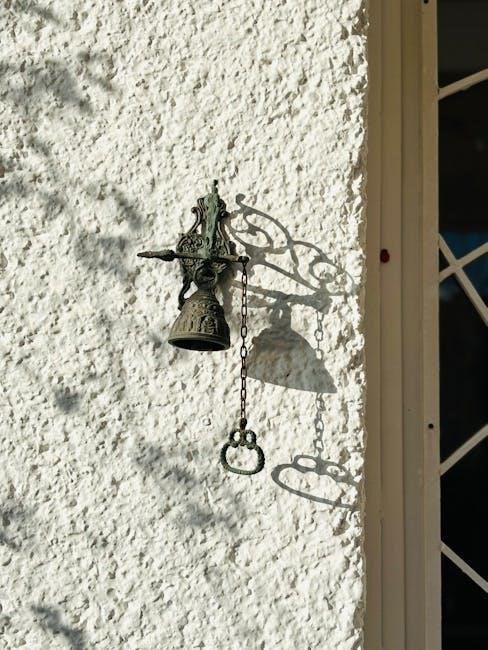
Resources for Further Research and Authentication
Utilize books, forums, and expert appraisals to verify authenticity and gain insights into your Dutch oven’s history and value.
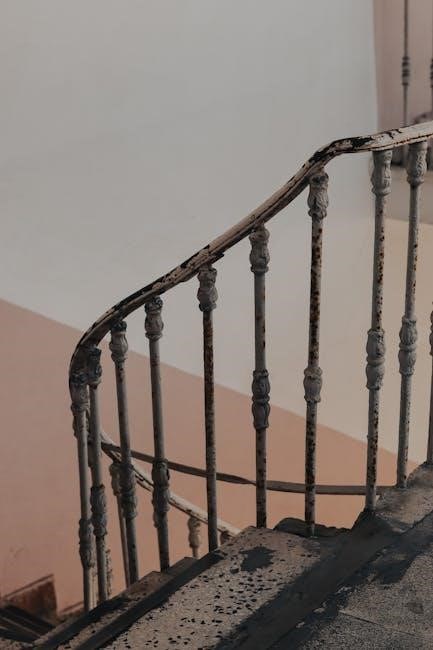
Recommended Books and Guides on Cast Iron Cookware
Several books and guides are essential for identifying and valuing antique cast iron Dutch ovens. Titles like “The Cast Iron Skillet Cookbook” and “Collectible Cast Iron: A Guide to Grease and Griddles” offer detailed insights. These resources provide historical context, manufacturer information, and tips for restoration. Online forums and communities, such as those dedicated to vintage cookware, also serve as valuable platforms for sharing knowledge and connecting with experts. Additionally, specialized collector groups often publish newsletters and catalogs that highlight rare pieces and market trends, aiding enthusiasts in their pursuit of authentic and valuable cast iron cookware.
Online Communities and Forums for Dutch Oven Enthusiasts
Online communities and forums are invaluable resources for Dutch oven enthusiasts, offering a space to share knowledge, ask questions, and showcase collections. Platforms like Facebook groups, Reddit forums, and specialized collector communities provide insights into identification, restoration, and historical context. Many enthusiasts also share tips on maintenance, cooking techniques, and rare finds. These forums often feature appraisals, discussions about manufacturers, and advice from seasoned collectors. Additionally, online marketplaces like eBay and Etsy forums can help enthusiasts connect with sellers of antique cast iron pieces. Engaging with these communities fosters a sense of camaraderie and enhances the overall collecting experience.
Professional Appraisal Services for Antique Cast Iron Pieces
Professional appraisal services are essential for determining the value and authenticity of antique cast iron Dutch ovens. Experts use historical data, market trends, and condition assessments to provide accurate appraisals. They often specialize in cast iron cookware, offering detailed reports that include the item’s age, rarity, and potential market value. Collectors can find appraisers through antique dealers, auction houses, or professional organizations like the International Society of Appraisers. These services are particularly valuable for rare or unique pieces, helping enthusiasts make informed decisions about selling, insuring, or restoring their treasured cookware. A professional appraisal ensures transparency and credibility in transactions.
Antique cast iron Dutch ovens are timeless pieces, blending history, craftsmanship, and functionality. Identifying them requires careful observation of design, markings, and historical context, ensuring their legacy endures.
Summarizing Key Points for Successful Dutch Oven Identification
Identifying antique cast iron Dutch ovens involves examining physical traits like size, handle designs, and lid types. Look for maker’s marks and historical context to determine age and authenticity. Assessing condition, including patina and rust, helps evaluate value. Understanding manufacturer histories, like Griswold and Lodge, aids in dating. Be wary of replicas and focus on genuine wear. Collectibility factors, such as rarity and historical significance, influence market value. Proper restoration maintains integrity. Combining research, observation, and expert insights ensures accurate identification and valuation of these timeless cookware pieces.